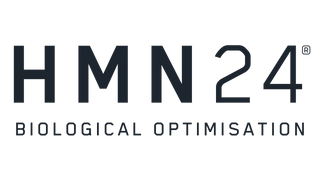What are Brain Waves?
Brain waves are oscillating electrical voltages in the brain measuring just a few millionths of a volt. There are five widely recognised brain waves, each serving different purposes. Each of which we need to happen at the right time under the right stimulus if we’re to optimise human performance.- Gamma (35 Hz +)
- Beta (12–35 Hz)
- Alpha (8–12 Hz)
- Theta (4–8 Hz)
- Delta (0.5–4 Hz)
Stimulating Brain Waves
Gamma Waves
We produce these when we’re actively involved in processing information and learning. Concentration is the keyword here and we produce them through absolute focus. Gamma is the holy grail. It facilitates faster problem solving, enhanced concentration, clarity, deeper insight, enhanced learning, better memory retention, happiness, connections and relaxation. Any of you that have seen the movie or series limitless. This is the heightened state it’s referring to, just with a little additional ‘Hollywood’ added. When you’re learning, connecting information, or integrating it into your life you’re stimulating these Gamma brain waves. Complete engagement in something and switching off from all else does the same. Being able to mute all noise from social media, your devices and just be in that moment. Spending uninterrupted time with your kids or friends, doing something that changes lives, doing things that make you feel alive and meaningful. The Deep Work that Cal Newport refers to in his book of the same name refers to this state. A composer composing. A creative, being creative. An athlete training. All stimulate gamma brain waves. Strangely, often these waves are stimulated when people are doing things they often negate as they don’t see it as productive or aligned with their goals. All things we encourage, endorse and see as a huge element of HMN optimisation.Beta Waves
Beta Waves are stimulated when we’re wide awake, alert, and focused. Beta activity replaces the mid-range alpha activity when you concentrate or you become anxious. Caffeine serves to increase Beta Activity and suppresses the slower waves, too much or mistimed caffeine ingestion can create issues later in the day with rest and recovery as we become overly stimulated in the early hours and struggle to produce enough slower waves to rest efficiently. Children with autism often have little or no detectable beta activity, which is one of the reasons they are often referred to as “disconnected kids.”Alpha Waves
This is the zen or FLOW state people refer to. Relaxed, not agitated, but not drowsy. This is the state in which we’re mentally resourceful, we co-ordinate mental tasks and we’re at ease. It is the major rhythm seen in normal relaxed adults. Consumption of L-theanine results in an increase of alpha-wave activity in the brain. When L-theanine is combined with caffeine as it is in RISE it eliminates caffeine’s vasoconstrictive tendencies and therefore any of the commonly seen side effects.Theta Waves
Inventiveness resides in this state between asleep and awake (Why many swear by having a notepad by the bed). It gives us a heightened state of consciousness and super-learning. Theta brainwaves also produce gamma-aminobutyric acid (GABA), an inhibitory neurotransmitter that blocks excitatory responses in the brain, making it a modulating frequency that helps the rest of the brain work optimally. Most of the modern population has very little theta activity due to stress and over-stimulation.Delta Waves
These are the lowest frequencies and occur in deep sleep and is present in stages 3 and 4 of sleep. We increase Delta waves in order to decrease our awareness of the physical world. We also access information in our unconscious mind through Delta. High performance requires us to decrease Delta waves. Someone shifting from high to low levels of caffeine will often experience increases in theta and delta activity, with a concurrent decrease in both alpha and beta frequencies. Caffeine is always best utilised in moderation and strategically in the early hours of our day for a multitude of reasons, brain wave stimulation being one of them. Knowledge of brainwave states enhances our ability to make use of the specialized characteristics of those states: these include being mentally productive across a wide range of activities, such as being intensely focused, relaxed, creative and in restful sleep. Something we are hugely passionate about here at HMN24.Blog posts
The Science Your Meeting Room Is Getting Wrong
Most meeting rooms are designed for convenience, not cognition. Rising carbon dioxide, poor ventilation and environmental load quietly shut down the human brain long before the meeting agenda does. This article breaks down the science and explains why performance starts with the air we breathe.
Gym Equipment Manufacturers, Gym Spaces, and Why They Need to Adapt
The fitness industry is undergoing its biggest transformation in decades. Gym equipment manufacturers can no longer rely on selling hardware alone — modern users demand outcomes, evidence, personalised systems, and environments that support real human performance. This article explores the data, science, and commercial forces driving this shift.
The Hidden Architecture of Sleep: Why Three Microclimates Determine How Well You Rest
You don’t sleep on a mattress, you sleep inside three thermal microclimates that sit between your body, your clothing and your bedding. These microclimates determine how quickly you fall asleep, how deeply you stay asleep and how well you recover. This piece explains the science, the technologies that improve it, and how to optimise your environment even without tech.







